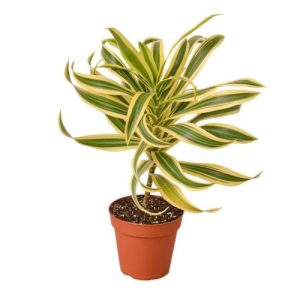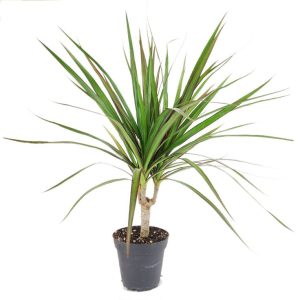- English
- Chinese
- French
- German
- Portuguese
- Spanish
- Russian
- Japanese
- Korean
- Arabic
- Irish
- Greek
- Turkish
- Italian
- Danish
- Romanian
- Indonesian
- Czech
- Afrikaans
- Swedish
- Polish
- Basque
- Catalan
- Esperanto
- Hindi
- Lao
- Albanian
- Amharic
- Armenian
- Azerbaijani
- Belarusian
- Bengali
- Bosnian
- Bulgarian
- Cebuano
- Chichewa
- Corsican
- Croatian
- Dutch
- Estonian
- Filipino
- Finnish
- Frisian
- Galician
- Georgian
- Gujarati
- Haitian
- Hausa
- Hawaiian
- Hebrew
- Hmong
- Hungarian
- Icelandic
- Javanese
- Kannada
- Kazakh
- Khmer
- Kurdish
- Kyrgyz
- Latin
- Latvian
- Lithuanian
- Luxembou..
- Macedonian
- Malagasy
- Malay
- Malayalam
- Maltese
- Maori
- Marathi
- Mongolian
- Burmese
- Nepali
- Norwegian
- Pashto
- Persian
- Punjabi
- Serbian
- Sesotho
- Sinhala
- Slovak
- Slovenian
- Somali
- Samoan
- Scots Gaelic
- Shona
- Sindhi
- Sundanese
- Swahili
- Tajik
- Tamil
- Telugu
- Thai
- Ukrainian
- Urdu
- Uzbek
- Vietnamese
- Welsh
- Xhosa
- Yiddish
- Yoruba
- Zulu
- Kinyarwanda
- Tatar
- Oriya
- Turkmen
- Uyghur

Ọtụtụ ndị na-enwe mmasị na osisi na-asọpụrụ ya Dragọn ọbara because of its unusual look and strong cultural meaning. This plant draws much of attention for its unusual resin in addition to great decorative value. Understanding the growing environment and ideal parameters of the dragon blood tree helps one to guarantee its healthy development. In terms of light, temperature, humidity, soil and maintenance, the dragon blood tree’s needs assist aficioners better grow and care for this beautiful plant.

Abụ nke India Dracaena Reslexa Abụ
Ọnọdụ dị ọkụ
Osisi Ọbara Ọbara Ahụ Na-etolite n'ìhè dị ukwuu na ìhè. Ọ bụ ezie na o nwekwara ike iguzogide ụfọdụ ndò, ọ na-ahọrọ ìhè dị iche. Ọ na - etokarị na ntọala anwụ na - enweghị isi maka ọnọdụ nwere ihu ọma, osisi dragọn ahụ dị na gburugburu eke. A ga-eguzo osisi abara ọbara ahụ nso ka ọ wee nweta ìhè zuru oke ma na-eme nke ọma n'ime ahụike.
The dragon blood tree may suffer from leaf burns in bright sunlight, hence avoid placing it in direct sunlight particularly in summer. Insufficient light will cause the plant’s development rate to slow down and dull and soft leaves to result. In this situation, you might want to take into account adding a plant growth lamp as a supplemental light source to make sure the plant stays healthy in seasons or weather lacking enough light.
Ọ dị mkpa oyi
Dragon blood tree development depends also on temperature. The perfect development temperature is between sixty and eighty degrees Fahrenheit. Although dragon blood trees are somewhat temperature-wise flexible, their development will be affected by either too hot or too low temperatures. Below fifty degrees, environments might slow down or even impair the plant’s growth.
Ekwesịrị idozi okpomoku n'ime n'ime oge oyi iji gbochie ikuku oyi na ntu oyi. Osisi ọbara ga-ata ahụhụ ngwa ngwa na ọnọdụ okpomọkụ dị elu, ọ dị mkpa ịgbara mmiri dị mkpa iji chekwaa ala ala. Iji onye na-efe efe ka ikuku na-emegharị ma belata ọnọdụ okpomọkụ ga-enyere aka ikwe nkwa na osisi a na-emetụta okpomọkụ n'oge ọkọchị na-ekpo ọkụ n'oge ọkọchị.
Ikike iru mmiri
Ọha na ebe okpomọkụ na ebe nchekwa, dracaena na-eme nke ọma n'okpuru iru mmiri. Ya mere, ezigbo mmepe nke osisi dragọn ọbara na-adabere na idobe iru mmiri ikuku kwesịrị ekwesị. Ogologo iru mmiri zuru oke kwesiri ịda n'etiti iri ise. A na-emepụta osisi ọgwụ dragọn ma ọ bụ kpụọ ahịhịa.
Iji hukedị ihu iji mee ka ikuku mmiri ma ọ bụ ịhazi mmiri na-agba gburugburu osisi nwere ike inye aka bulie iru mmiri. Iji bulie iru mmiri gburugburu akwụkwọ, ị nwekwara ike iji sprayer mee ka mmiri nwee mmiri. Ikuku a na - akpọnwụ n'oge oyi kpo oku, ya mere ọ dị ezigbo mkpa iji kwụọ ụgwọ ka ọ na-eche ihu iru mmiri.
Chọrọ ala
The cornerstone for Dracaena’s good development is suitable soil. Dracaena likes airy and well-drained soil. Usually the optimum combination is humus, garden soil, and sand. While not readily retaining water to avoid root rot, this mixed soil may retain suitable humidity.
Adding some perlite or vermiculite when growing Dracaena can help the soil’s drainage and air permeability to be improved. Furthermore, consistent soil changes—especially in the spring of every year—can supply the plant new nutrients and encourage its good development.
Mwebata Fertilization
Njikọ nri nwere ike inye aka Dracana nke na-eme nke ọma ma nye ihe ndị chọrọ nri. A na-ekwukarị, ya bụ, mmiri mmiri na ọkọchị, a ga-eji fatịlaịza fatịlaịza mee ihe otu ọnwa iji nye ihe dị mma maka nitrogen, phospherous na potassium dum n'oge uto. Tupu itinye fatịlaịza, itughari ya iji gbochie itinye ngwa nri fatịlaịza na-akpata ọkụ.
Mmepe nke osisi dragọn osisi ga-akwụsịlata n'oge mgbụsị akwụkwọ na udu mmiri, n'ihi ya, ọ bụ ugboro ole cootranch kwesịkwara belata n'oge a. Itinye ezigbo fatịlaịza nwere ike ibute nri nri ma mepụta ọtụtụ nsogbu. N'ihi ya, lee ọnọdụ nke osisi ma gbanwee oge fatịlaịza ka oge na-egbo mkpa ya.
Njikwa na mmezi
Na-ahụ na mmepe ahụ dị mma nke osisi Dragọn ọbara na-adabere na nlekọta dị mma na njikwa dị mma. Ugboro ugboro akwụkwọ nyocha nke osisi na ọrịa na njikwa ụmụ ahụhụ na-enyere aka inwe ahụ ike. Ọzọkwa usoro dị oke mkpa iji kwụsị mgbọrọgwụ na-eme ka ọ bụrụ ugboro ugboro ma zere ala ahịhịa.
See the plant’s development throughout the growing season; prune the yellow leaves in time; encourage the development of fresh leaves; thus, enhance the decorative value. Replace the flower container at the same time to guarantee the plant has adequate growing area.
Na-achịkwa ọrịa na ụmụ ahụhụ
Aphids, ndị na-acha ọbara ọbara na ebe ntụpọ ahịhịa bụ ọrịa na-ahụkarị ọrịa na ọrịa nke dragọn osisi. Nnyocha akwụkwọ niile nke osisi ga - enyere gị aka ịmata ihe dị iche iche na itinye ihe omume. Maka ụmụ ahụhụ dị nro, ị nwere ike ịgba mmiri fatịlaịza dabara adaba maka ịchịkwa ma ọ bụ jiri mmiri dị ọcha sachaa ya. Nrụ ọgwụ dị iche iche achọrọ maka ọgwụgwọ nke pests.
Nọgide na-eto eto na-eto eto na-enyere aka belata oke ọrịa na ụmụ ahụhụ. Otu n'ime ụzọ aghụghọ iji zere ahụhụ na ọrịa bụ nkwa iru mmiri kwesịrị ekwesị na ikuku dị mma. Mgbanwe siri ike na mmegharị dị elu na mgbanwe gburugburu ebe obibi na-akọwapụta osisi dị mma.
Na-eji ọdịbendị
Ọ bụ ezie na a na-eji anya ya na-ekwupụta ụdị anya ya, resin ya enwekwara nnukwu uru ọdịnala n'oge ndị gara aga. Ebe a na-ejikwa ya ebe niile maka agba ya na-adịghị ahụkebe ya, nke e ji mee ka resin nke dracaena na nro, ọgwụ na ngwa nri. Ọtụtụ mgbe, a na-ahụ ihe omume okpukpe, a na-ahụ dracana na mmepeanya dị iche iche dị ka ihe ịrịba ama nke nchebe na ezigbo akụ.

Rikki Dracaena Dracana Daramensis Rikki
Abụ akwụkwọ osisi pụrụ iche, Dracana Na-etolite n'okpuru ọkụ kwesịrị ekwesị, okpomọkụ, iru mmiri, ala na ntụzi ọnụ. Nghọta na ịrụzu ọrụ ndị a ga-enyere ndị aka aka hụ na Tracaena na-etolite ma gosipụta mma ya pụrụ iche. Site na nyocha na ngwa, Aciciibed nwere ike ọ bụghị naanị ịkwalite mma nke osisi kamakwa ọ na-enwe ọ andụ na mmetụta nke inwe ihe ịga nke ọma na gburugburu ha na gburugburu ha. Ka anyị ji ọrụ a kpọrọ ihe ma jiri onyinye a dị iche iche kpọrọ ihe.



